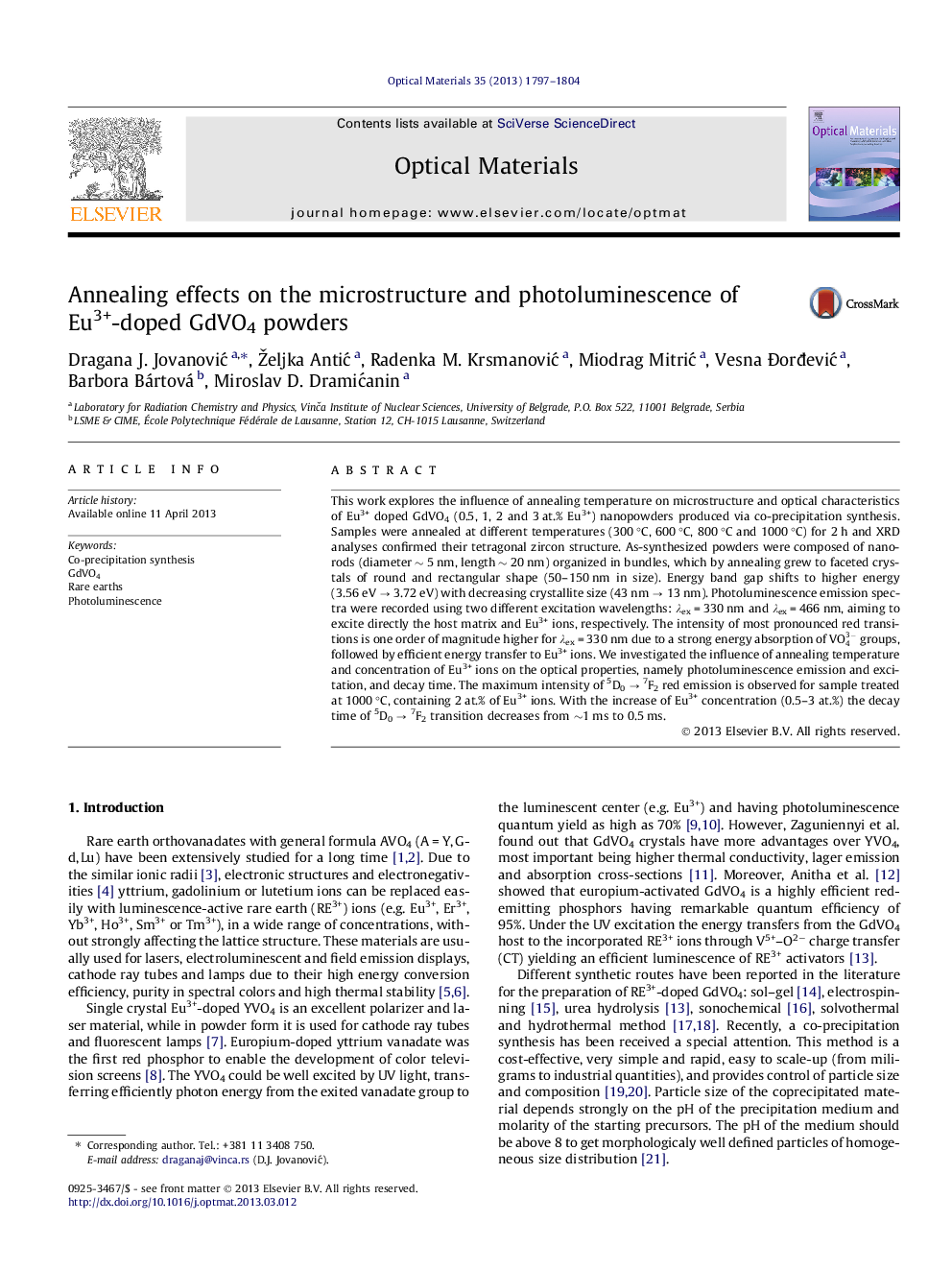| کد مقاله | کد نشریه | سال انتشار | مقاله انگلیسی | نسخه تمام متن |
|---|---|---|---|---|
| 1495186 | 992928 | 2013 | 8 صفحه PDF | دانلود رایگان |

• Eu3+ doped GdVO4 samples were produced via co-precipitation synthesis.
• How annealing (300–1000 °C) affects structural and optical properties.
• Morphology changes from nanorod bundles to larger, rectangular crystals.
• The max PL emission is reached for the most crystalline samples obtained at 1000 °C.
This work explores the influence of annealing temperature on microstructure and optical characteristics of Eu3+ doped GdVO4 (0.5, 1, 2 and 3 at.% Eu3+) nanopowders produced via co-precipitation synthesis. Samples were annealed at different temperatures (300 °C, 600 °C, 800 °C and 1000 °C) for 2 h and XRD analyses confirmed their tetragonal zircon structure. As-synthesized powders were composed of nanorods (diameter ∼ 5 nm, length ∼ 20 nm) organized in bundles, which by annealing grew to faceted crystals of round and rectangular shape (50–150 nm in size). Energy band gap shifts to higher energy (3.56 eV → 3.72 eV) with decreasing crystallite size (43 nm → 13 nm). Photoluminescence emission spectra were recorded using two different excitation wavelengths: λex = 330 nm and λex = 466 nm, aiming to excite directly the host matrix and Eu3+ ions, respectively. The intensity of most pronounced red transitions is one order of magnitude higher for λex = 330 nm due to a strong energy absorption of VO43- groups, followed by efficient energy transfer to Eu3+ ions. We investigated the influence of annealing temperature and concentration of Eu3+ ions on the optical properties, namely photoluminescence emission and excitation, and decay time. The maximum intensity of 5D0 → 7F2 red emission is observed for sample treated at 1000 °C, containing 2 at.% of Eu3+ ions. With the increase of Eu3+ concentration (0.5–3 at.%) the decay time of 5D0 → 7F2 transition decreases from ∼1 ms to 0.5 ms.
Figure optionsDownload high-quality image (112 K)Download as PowerPoint slide
Journal: Optical Materials - Volume 35, Issue 10, August 2013, Pages 1797–1804